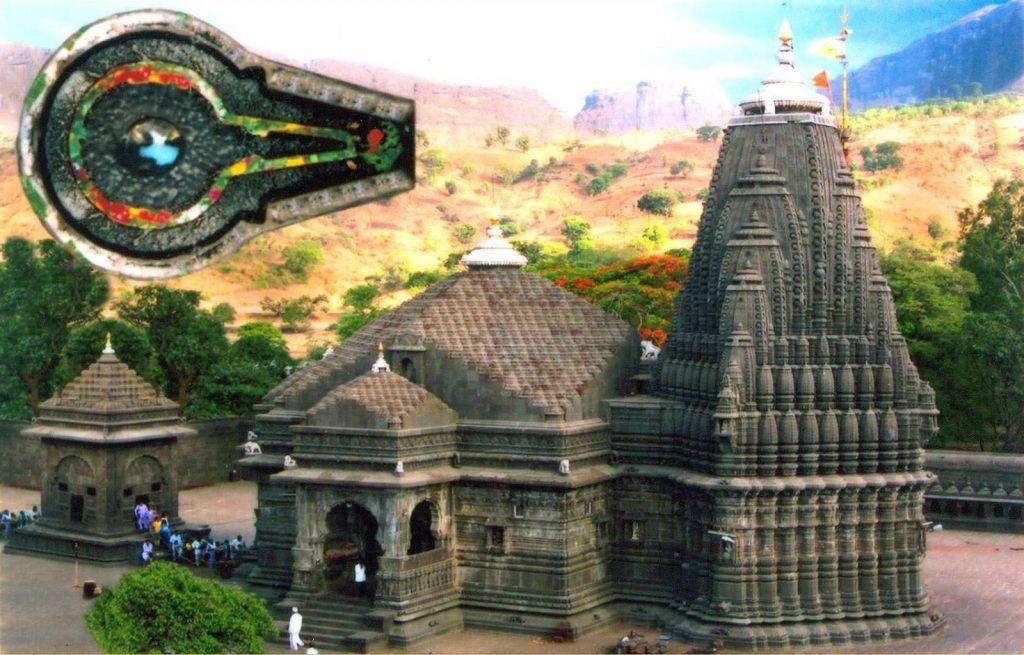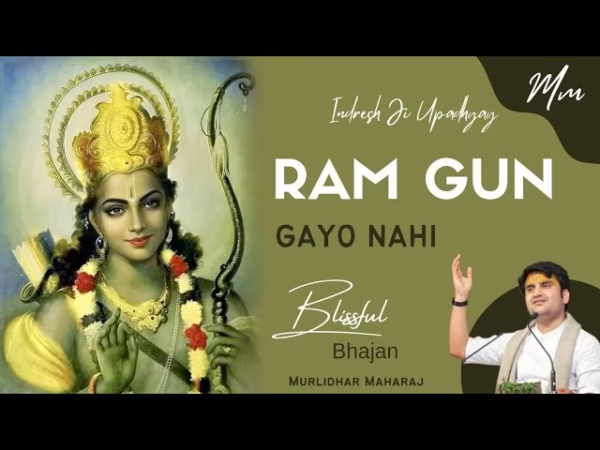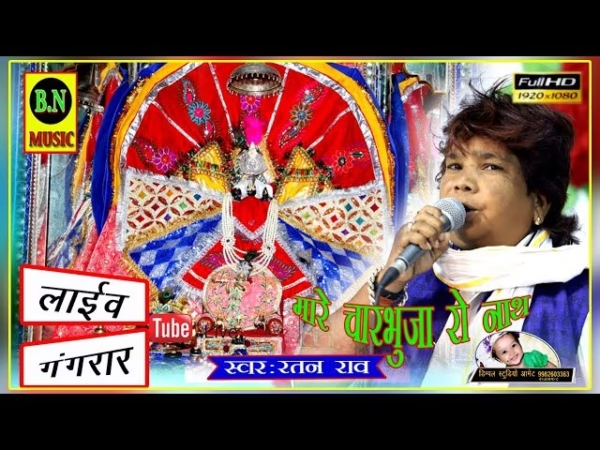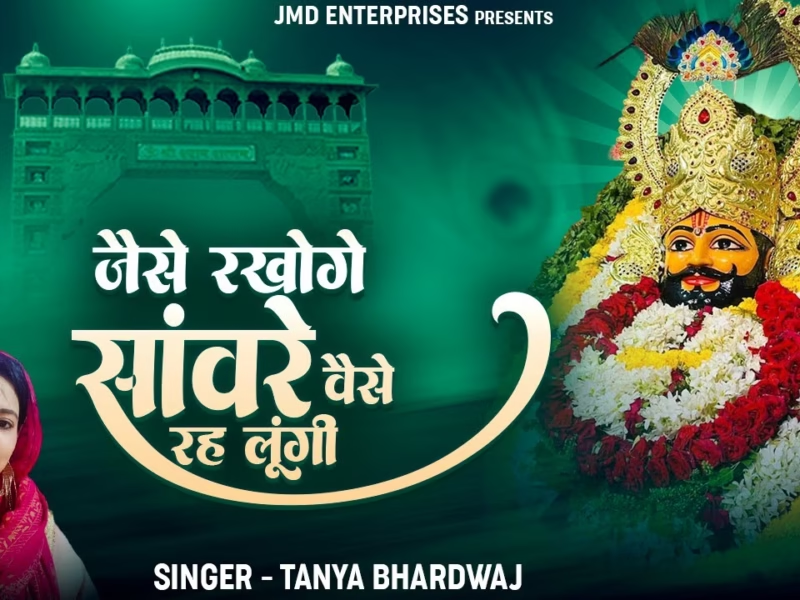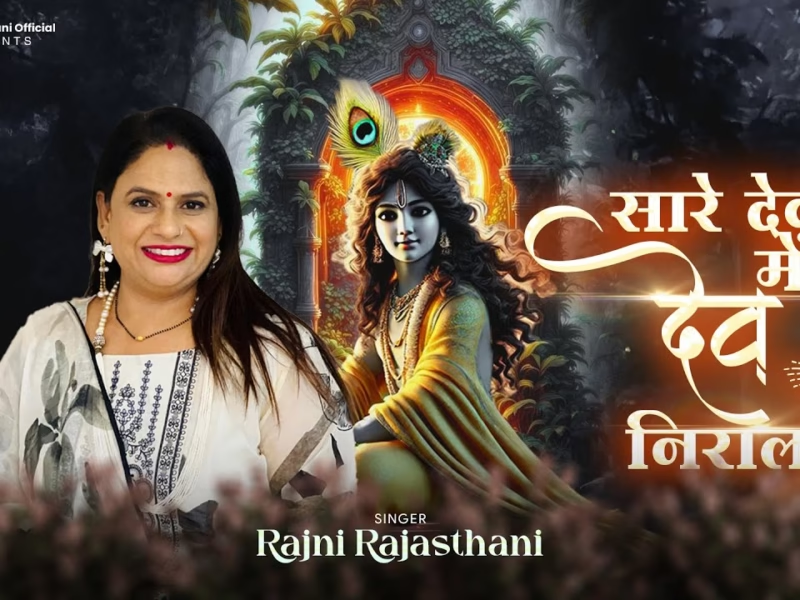Contents
Trimbakeshwar Shiva Temple holds immense significance in Hindu mythology and is considered a highly revered pilgrimage site. It is believed that a visit to this temple and offering prayers can cleanse one’s sins and fulfill their desires. The temple is associated with the holy river Godavari, which is said to have originated from the Brahmagiri Mountain near the temple.
Trimbakeshwar Shiva Temple (Nashik)
Trimbakeshwar town is an ancient Hindu Pilgrim centre located at the source of the Godavari River, the longest river in peninsular India. Trimbakeshwar is the abode of one of the twelve Jyotirlingas. The extraordinary feature of the Jyotirlinga located here is the Linga in the temple is in the form of a three-faced embodying Tridev, Lord Brahma, Lord Vishnu and Lord Shiva.
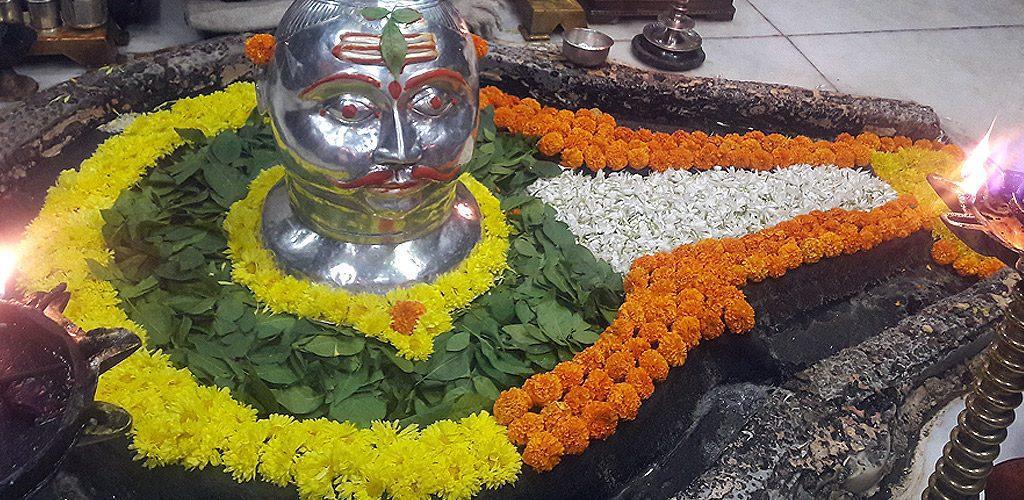
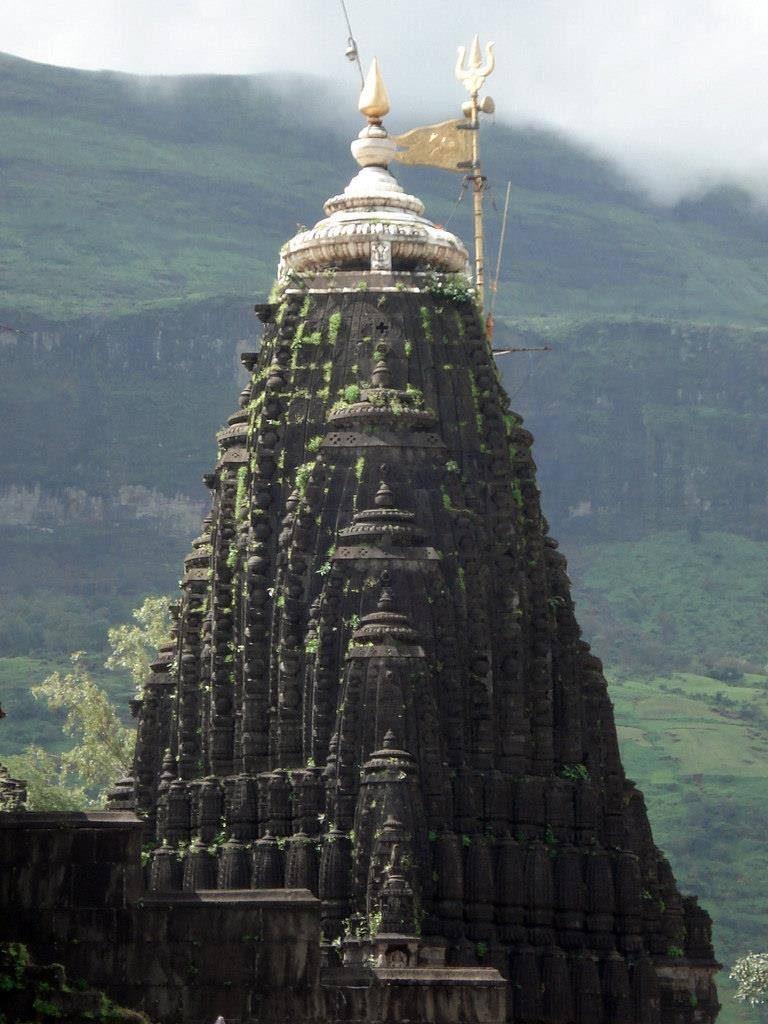
The present Trimbakeshwar temple was constructed by third Peshwa Balaji Bajirao (1740-1760) on the site of an old temple. There are entry gates on all the four sides, viz. East, West, South and North. As per spiritual conceptions, the direction East denotes the beginning, West denotes maturity, south denotes fulfilment or completion and the North stands for the revelation.
In the year 1954, the Sansthan was registered under public trust registration act. Shri Trimbakeshwar Sansthan takes care of daily three-time pooja, all the festivals and gala carnivals of the year.
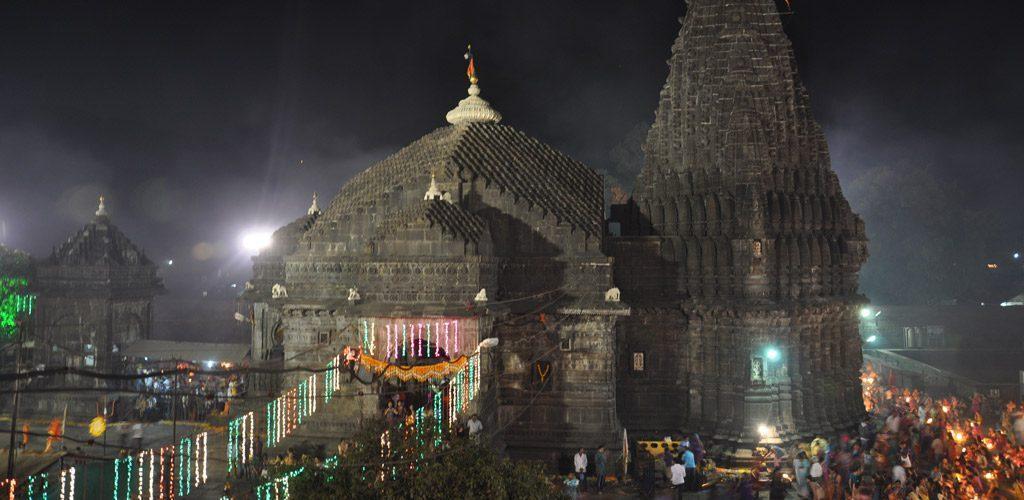
Festivals Celebrated
Trimbakeshwar Shiva Temple is not only a place of spiritual significance but also a hub of vibrant festivities. Throughout the year, the temple comes alive with various festivals and celebrations that attract devotees from far and wide. Let’s explore some of the major festivals celebrated at Trimbakeshwar Shiva Temple:
1. Maha Shivaratri: Maha Shivaratri, the Great Night of Lord Shiva, is one of the most significant festivals observed at Trimbakeshwar Shiva Temple. Devotees flock to the temple to seek the blessings of Lord Shiva on this auspicious occasion. The night is marked by special prayers, chants, and offerings to Lord Shiva. The temple premises are beautifully decorated, and a grand procession known as the “Palki Procession” takes place, wherein the idols of Lord Shiva and Goddess Parvati are carried in a palanquin.
2. Shravan Somvar: The holy month of Shravan, according to the Hindu calendar, holds great reverence for Lord Shiva. During the Mondays of this month, known as Shravan Somvar, devotees undertake rigorous fasting and visit Trimbakeshwar Shiva Temple to offer prayers and perform rituals. The temple witnesses a significant influx of pilgrims during this period, creating a vibrant and spiritual atmosphere.
3. Navaratri: Navaratri, a nine-night festival dedicated to the worship of the divine feminine energy, is celebrated with immense enthusiasm at Trimbakeshwar Shiva Temple. Devotees participate in various devotional activities, including fasting, recitation of sacred texts, and performing traditional dance forms such as Garba and Dandiya. The temple complex is adorned with colorful decorations, and the air is filled with devotion and joy.
4. Diwali: Diwali, the festival of lights, holds special significance at Trimbakeshwar Shiva Temple. The entire temple complex is illuminated with thousands of diyas (earthen lamps), creating a mesmerizing sight. Devotees offer prayers and seek blessings from Lord Shiva and Goddess Parvati on this auspicious day. The atmosphere is filled with joyous celebrations, firecrackers, and a sense of spiritual rejuvenation.
5. Other Festivals: Trimbakeshwar Shiva Temple also celebrates other festivals such as Ganesh Chaturthi, Krishna Janmashtami, and Ram Navami with great fervor. These festivals witness special decorations, devotional music, cultural programs, and a surge of devotees eager to participate in the festivities.
During these festivals, the temple becomes a center of devotion, music, dance, and spiritual fervor. The atmosphere resonates with the sounds of prayers, hymns, and the aroma of incense. Devotees from different walks of life come together to express their devotion and experience the divine blessings of Lord Shiva at Trimbakeshwar Shiva Temple.
History of Trimbakeshwar Shiva Temple
Trimbakeshwar Shiva Temple has a rich history that spans thousands of years, intertwining mythology, dynasties, and religious significance. Let’s delve into the fascinating historical journey of this revered temple:
Ancient Origins: The origins of Trimbakeshwar Shiva Temple can be traced back to ancient times. The exact period of its establishment is shrouded in the mists of history, but it is believed to have been constructed during the Satavahana dynasty, which ruled parts of central and southern India from the 2nd century BCE to the 3rd century CE. The temple’s significance and spiritual aura began to grow during this time.
Yadava Dynasty: The temple gained prominence during the reign of the Yadava dynasty, which ruled the Deccan region from the 9th to the 14th century CE. The Yadavas contributed significantly to the development and expansion of Trimbakeshwar Shiva Temple. They made substantial donations and introduced architectural elements that became integral to the temple’s design.
Contribution of the Peshwas: The influence of the Peshwas, who were the prime ministers of the Maratha Empire, can be seen in the temple’s architecture. During their rule from the 18th century onwards, the Peshwas made significant renovations and additions to the temple complex. Their patronage further enhanced the prominence of Trimbakeshwar Shiva Temple as a major pilgrimage site.
Jyotirlinga Status: Trimbakeshwar Shiva Temple is one of the twelve Jyotirlingas in India, which are considered the most sacred abodes of Lord Shiva. The significance of the temple as a Jyotirlinga site dates back to ancient Hindu scriptures and mythology. It is believed that the Jyotirlinga represents the cosmic form of Lord Shiva and holds immense spiritual importance for devotees.
Restoration and Conservation: Over the centuries, Trimbakeshwar Shiva Temple has undergone several restoration and conservation efforts to preserve its architectural grandeur and historical significance. The Archaeological Survey of India (ASI) and local authorities have been actively involved in maintaining and protecting the temple’s heritage.
Pilgrimage Destination: Trimbakeshwar Shiva Temple has long been revered as a major pilgrimage destination, attracting devotees from across India and beyond. The temple’s historical and spiritual importance has been a driving force behind its continuous popularity and the deep-rooted faith associated with it.
Today, Trimbakeshwar Shiva Temple stands as a symbol of cultural heritage and religious devotion. Its ancient history, adorned with legends and dynastic contributions, adds to the aura of this sacred place. As devotees and visitors step foot into its hallowed premises, they become part of a historical continuum that spans centuries of worship and reverence.
Mythological Legends
Trimbakeshwar Shiva Temple is steeped in mythological legends and tales that add to its mystical aura. Let’s delve into some of the captivating stories associated with this sacred place:
1. Origin of the Godavari River: According to Hindu mythology, the Godavari River, one of the holiest rivers in India, is said to have originated from the Brahmagiri Mountain near Trimbakeshwar. The legend goes that Gautama Rishi, an esteemed sage, performed severe penance here to please Lord Shiva. Pleased with his devotion, Lord Shiva caused the Ganga River to flow from his matted locks, which eventually became the Godavari River.
2. The Cursed Sage: Another popular legend revolves around the sage Gautama. It is believed that Gautama Rishi, along with his wife Ahalya, resided near Trimbakeshwar. Due to a curse, Ahalya was turned into a stone. In his sorrow, Gautama Rishi prayed to Lord Shiva for forgiveness and asked for a river to wash away his sins. Lord Shiva granted his wish, and the Godavari River began flowing, purifying the sage and his surroundings.
3. Visit of Lord Rama: The epic Ramayana tells the tale of Lord Rama, his wife Sita, and his brother Lakshmana visiting Trimbakeshwar during their exile. It is believed that Lord Rama, seeking forgiveness for the sin of killing Ravana, came here to seek blessings from Lord Shiva. The temple houses a holy stone known as “Rama Linga,” which is said to mark the spot where Lord Rama offered prayers.
4. Curse of Gautama Rishi: Legend has it that Gautama Rishi cursed the Godavari River to flow underground due to a disagreement with other sages. As a result, the region suffered from severe drought. Realizing his mistake, Gautama Rishi prayed to Lord Shiva at Trimbakeshwar, seeking forgiveness and the return of the river’s flow. Pleased with his penance, Lord Shiva released the Godavari River from its underground course.
5. The Trimbakeshwar Jyotirlinga: Trimbakeshwar is considered one of the twelve Jyotirlingas, which symbolize Lord Shiva’s divine form. It is believed that the Jyotirlinga at Trimbakeshwar represents Lord Shiva as “Tryambaka,” the three-eyed deity. The significance of the Jyotirlinga lies in the belief that Lord Shiva himself manifests at these sacred places to bless his devotees and fulfill their wishes.
Architecture
The Trimbakeshwar Shiva Temple boasts a magnificent architectural design that showcases the artistic brilliance of ancient craftsmen. The temple’s architecture is a splendid fusion of various styles, including the Hemadpanti style of construction that was prevalent during the Yadava dynasty.
The temple complex is built using locally sourced black basalt stone, which adds to its grandeur and durability. The intricate carvings and sculptures adorning the walls and pillars are a testament to the exceptional craftsmanship of the artisans.
The main entrance of the temple, known as the Mahadwar or the Great Doorway, is an awe-inspiring sight. It is adorned with ornate carvings depicting mythological figures, divine beings, and intricate floral patterns. As you step through the Mahadwar, you are greeted by a captivating courtyard surrounded by smaller shrines and pillared corridors.
The central shrine of the temple houses the lingam, which symbolizes Lord Shiva. The sanctum sanctorum is a small, dark chamber where the lingam is placed. The entrance to this sacred space is guarded by an intricately carved silver door, which adds a touch of elegance and reverence.
The temple’s interior is adorned with beautifully sculpted idols of various deities and mythological figures. The pillars inside the temple showcase exquisite carvings of gods, goddesses, celestial beings, and scenes from Hindu mythology. The play of light and shadow on these intricate carvings creates a mesmerizing ambiance.
The temple’s spire, known as the Shikhara, is an architectural marvel that reaches for the skies. It is adorned with intricate sculptures and motifs that depict scenes from Hindu epics and legends. The Shikhara is topped with a golden kalasha, a pot-like structure symbolizing abundance and prosperity.
The temple’s architecture is not limited to its main structure but extends to the surrounding courtyards and smaller shrines. Each shrine has its unique architectural elements, reflecting the diverse artistic styles prevalent during different periods.
The Trimbakeshwar Shiva Temple stands as a remarkable example of the architectural heritage of India. Its intricate carvings, ornate pillars, and majestic spire are a visual treat for visitors. The temple’s design not only showcases the devotion and spirituality of its builders but also serves as a testament to the rich cultural and artistic traditions of the region.
Visiting the Trimbakeshwar Shiva Temple allows you to witness the seamless blend of art, spirituality, and architectural brilliance that has enthralled devotees and art enthusiasts for centuries.
How to Reach
Trimbakeshwar is connected to Nashik by the four-lane road. One can also reach to Trimbakeshwar by leaving N.H.3 (Mumbai- Agra) near Ghoti village (next to Igatpuri while coming from Mumbai). Trimbakeshwar is also connected via road from Charoti Naka (90 Km) on Mumbai – Ahmedabad highway. (NH8)
Trimbakeshwar Shiva Temple is located in the town of Trimbak, near Nashik in Maharashtra, India. Here are the various transportation options to reach the temple:
By Air: The nearest airport to Trimbakeshwar Shiva Temple is Gandhinagar Airport in Nashik, which is approximately 40 kilometers away. The airport is well-connected to major cities in India. From the airport, you can hire a taxi or take a bus to reach Trimbakeshwar.
By Train: The nearest railway station to Trimbakeshwar is Nashik Road Railway Station, situated about 28 kilometers away. Nashik Road is well-connected to major cities in India through regular train services. From the railway station, you can hire a taxi or take a bus to reach Trimbakeshwar.
By Road: Trimbakeshwar is well-connected by road, and there are several options to reach the temple by bus, car, or taxi. Nashik is the major city closest to Trimbakeshwar, and regular bus services operate between the two. You can also hire a private cab or drive your own vehicle from Nashik to Trimbakeshwar. The distance between Nashik and Trimbakeshwar is approximately 28 kilometers, and the journey takes around 1 hour.
Local Transportation: Once you reach Trimbakeshwar, you can explore the town and visit the temple by foot or hire a local auto-rickshaw. The temple is located in the heart of the town, and most accommodations and amenities are within walking distance.
Pilgrimage Routes: Trimbakeshwar is a popular pilgrimage destination, and many devotees undertake a sacred walk to reach the temple. There are specific pilgrimage routes known as “Panchvati Yatra” and “Nashik-Trimbakeshwar Padyatra” that devotees can take to reach the temple on foot. These routes are marked with signboards and have facilities for resting and refreshments along the way.
Travel Tips:
- It is advisable to check the temple’s opening hours and plan your visit accordingly.
- Dress modestly and respectfully when visiting the temple.
- Remove footwear before entering the temple premises.
- Carry drinking water, sunscreen, and hats during the summer months as it can get hot.
- Follow the instructions of local authorities and maintain cleanliness in and around the temple.
- Respect the customs and traditions of the temple and be mindful of the sanctity of the place.
Official Address
Shri.Trimbakeshwar Devsthan Trust.
Trimbakeshwar, Nashik, Maharashtra
Contact Details
Trust Office: +91-2594-233215
Bhaktnivas: +91-2594-234251
Email Id: admin@trimbakeshwartrust.com & trimbakeshwartrust@gmail.com
Website: http://www.trimbakeshwartrust.com/
Nearby Attractions
Apart from its religious significance, Trimbakeshwar offers breathtaking natural beauty and nearby attractions. The Brahmagiri Hill, with its picturesque landscapes, provides a panoramic view of the region. The Anjaneri Mountain, the birthplace of Lord Hanuman, is another must-visit spot. The nearby vineyards and the bustling city of Nashik add to the charm of the region.
FAQs
Yes, the temple is open to people of all religions. Visitors are required to respect the customs and traditions of the temple.
Photography is generally not permitted inside the main sanctum sanctorum. However, you can capture the beautiful exteriors and the scenic surroundings.
It is advisable to dress modestly and wear appropriate attire that covers the shoulders and knees as a mark of respect.
The temple can be visited throughout the year, but the months of February to April and September to November offer pleasant weather.
Visitors can participate in the rituals and prayers conducted at the temple. It is advisable to seek guidance from temple priests to understand the proper procedures.

